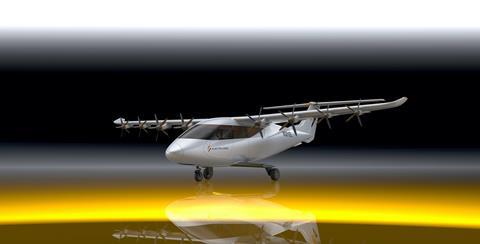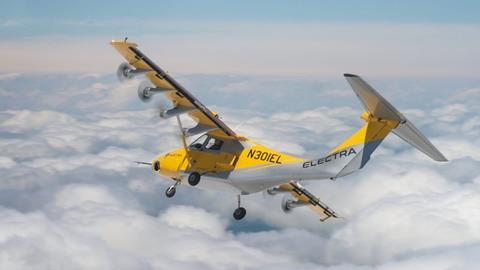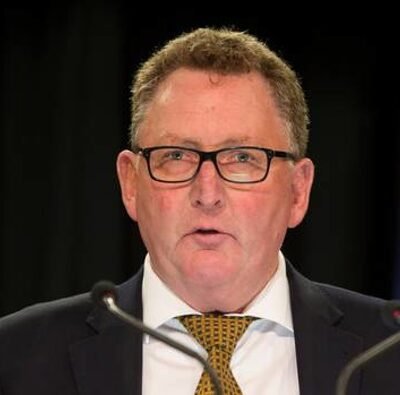Hybrid-electric aircraft developer Electra has secured another $115 million to help fund development of the EL9 regional passenger aircraft that it aims to have in service before 2030.
The Manassas, Virginia-based developer has already received the funds, which it raised as part of an investment round led by investor Prysm Capital, Electra said on 21 April.
“Electra’s EL9 Ultra Short is a game-changing aircraft that unlocks important new capabilities for commercial and defense users,” says Prysm managing partner Jay Park.
Investments in start-ups have slowed recently amid higher interest rates and economic uncertainty.

But money is available for the right firms, says Electra chief executive Marc Allen. Many investors are sitting on “dry powder” that they are willing to invest in companies that show promise in delivering returns over many years, he adds.
Allen views Electra as successful in raising more cash because its “blown-lift” aircraft design has potential well beyond Electra’s EL2 Goldfinch demonstrator and larger, in-development EL9 “Ultra Short” passenger aircraft.
The company envision developing future iterations of the EL9 and has secured a contract from NASA to study future designs with 100-200 seats.
“Investors are looking for generational investments,” Allen says. “We know that there is this modular pathway in front of us and we think that’s where the investors are also looking.”
Allen declines to say how much total funding Electra has received or how much cash it has on hand.
“We are right up there toward the top of the charts,” he says, referring to Electra’s funding position relative to competitors.
Allen also notes that Electra has secured contracts from the US Department of Defense, with the US government having committed more than $50 million to support development of Electra’s blown-lift aircraft design.
While competitors are developing vertical take-off and landing air taxis, Electra is going a different route. Its blown-lift aircraft have fixed wings and wing-mounted props. The props blow air around the wings and flaps in a manner that generates additional lift, allowing such aircraft to take off at only 35kt (65km/h) of airspeed, Electra says.
It intends to use the fresh $115 million in financing, part of a Series B funding round, to “enter the pre-production and certification phase of the EL9”.
Allen says Electra has lately been in a “heads-down development phase” that has involved working EL9’s preliminary design review, hiring more engineers and finalising suppliers.
This summer, Electra plans to complete a number of demonstration flights for possible commercial and military customers using its EL2 demonstrator.

The in-development EL9 will be powered by a hybrid-electric system and be capable of taking off and landing in as little as 46m (150ft) of ground distance. It is to carry up to nine passengers, cruise at 175kt and have up to 1,100nm (2,037km) of range.
Electra aims to have the EL9 in service in 2029. That would mean it would need to start building the first test articles in 2026, begin flying them in 2027 and achieve EL9’s certification in 2028 or early 2029, Allen says.
The company is pitching the EL9 both as a civilian passenger aircraft and a troop transport and logistics aircraft for the US military.





